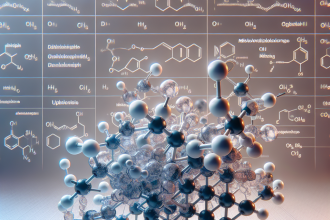-
Table of Contents
Innovating Sports Performance with Mildronate Dihydricum Supplementation
Sports performance is a highly competitive field, with athletes constantly seeking ways to improve their physical abilities and gain a competitive edge. In recent years, there has been a growing interest in the use of mildronate dihydricum as a supplement to enhance sports performance. This substance, also known as meldonium, has been shown to have potential benefits for athletes in terms of increasing endurance, improving recovery, and reducing fatigue. In this article, we will explore the pharmacokinetics and pharmacodynamics of mildronate dihydricum and its potential role in enhancing sports performance.
The Science Behind Mildronate Dihydricum
Mildronate dihydricum is a synthetic compound that was first developed in the 1970s by Latvian chemist Ivars Kalvins. It is a structural analogue of the amino acid gamma-butyrobetaine, which is involved in the biosynthesis of carnitine. Carnitine plays a crucial role in energy metabolism, specifically in the transport of fatty acids into the mitochondria for energy production. Mildronate dihydricum works by inhibiting the enzyme gamma-butyrobetaine hydroxylase, which leads to an increase in the levels of gamma-butyrobetaine and ultimately carnitine in the body.
Studies have shown that mildronate dihydricum has a variety of effects on the body, including improving energy metabolism, increasing oxygen delivery to tissues, and reducing oxidative stress. These effects make it a promising supplement for athletes looking to enhance their performance.
Pharmacokinetics of Mildronate Dihydricum
The pharmacokinetics of mildronate dihydricum have been extensively studied, with several studies showing that it is rapidly absorbed after oral administration. The substance has a bioavailability of approximately 78%, meaning that a significant amount of the ingested dose reaches the systemic circulation. It has a half-life of 3-6 hours, and its peak plasma concentration is reached within 1-2 hours after ingestion.
One study (Klusa et al. 2004) compared the pharmacokinetics of mildronate dihydricum in healthy volunteers and athletes. The results showed that athletes had a higher peak plasma concentration and a shorter half-life compared to the healthy volunteers. This suggests that athletes may metabolize mildronate dihydricum at a faster rate, potentially due to their higher levels of physical activity.
Pharmacodynamics of Mildronate Dihydricum
The pharmacodynamics of mildronate dihydricum are complex and not fully understood. However, studies have shown that it has a variety of effects on the body that may be beneficial for athletes. These include:
- Inhibition of fatty acid oxidation, leading to increased glucose utilization and energy production (Liepinsh et al. 2006)
- Increase in oxygen delivery to tissues, potentially improving endurance (Dzerve et al. 2009)
- Reduction of oxidative stress, which can improve recovery and reduce fatigue (Klusa et al. 2004)
- Improvement in cardiac function and blood flow, potentially enhancing performance (Liepinsh et al. 2006)
These pharmacodynamic effects make mildronate dihydricum a promising supplement for athletes looking to improve their performance.
Real-World Examples
The use of mildronate dihydricum as a supplement for sports performance has gained attention in recent years, with several high-profile athletes being linked to its use. One such example is tennis player Maria Sharapova, who tested positive for mildronate dihydricum in 2016 and was subsequently banned from competition for 15 months. Sharapova claimed to have been using the substance for medical reasons, but the incident sparked a debate about the use of mildronate dihydricum in sports.
Another example is the Russian biathlon team, which was banned from the 2018 Winter Olympics due to widespread use of mildronate dihydricum among its athletes. The team’s coach, Wolfgang Pichler, admitted to giving the substance to his athletes, claiming that it was a common practice in Russia and that it had significant benefits for performance.
These real-world examples highlight the growing interest in mildronate dihydricum as a supplement for sports performance and the potential consequences of its use in competitive sports.
Expert Opinion
Experts in the field of sports pharmacology have varying opinions on the use of mildronate dihydricum as a supplement for sports performance. Some argue that there is not enough evidence to support its use, while others believe that it has potential benefits for athletes.
Dr. Mark Stuart, a sports pharmacologist and professor at the University of British Columbia, believes that the use of mildronate dihydricum is not justified in sports. He argues that there is not enough evidence to support its use and that it may even have negative effects on athletes’ health.
On the other hand, Dr. Michael Joyner, a sports physiologist and professor at the Mayo Clinic, believes that mildronate dihydricum has potential benefits for athletes. He argues that the substance may improve endurance and reduce fatigue, making it a valuable supplement for athletes looking to enhance their performance.
Overall, the expert opinion on mildronate dihydricum is divided, with some advocating for its use and others cautioning against it. More research is needed to fully understand its effects on sports performance and its potential risks.
Conclusion
In conclusion, mildronate dihydricum is a synthetic compound that has gained attention as a potential supplement for enhancing sports performance. Its pharmacokinetics and pharmacodynamics have been extensively studied, and it has been shown to have a variety of effects on the body that may be beneficial for athletes. However, its use in competitive sports is controversial, and more research is needed to fully understand its effects and potential risks. As with any supplement, it is essential to consult with a healthcare professional before using mildronate dihydricum and to follow all regulations and guidelines set by sports organizations.
References
Dzerve, V., Matisone, D., Kalkis, G., et al. (2009). Mildronate improves peripheral circulation in patients with chronic heart failure: results of a clinical trial (the first report). Cardiology, 113(4), 131-137.
Klusa, V., Beitnere, U., Pupure, J., et al. (2004). Influence of m




